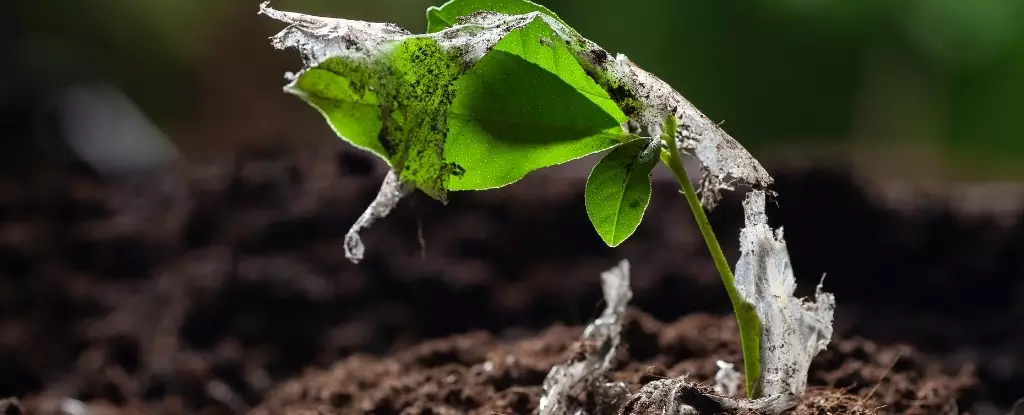As the world becomes increasingly aware of environmental issues, the insidious presence of microplastics in our food supply remains a glaring concern. New research involving an extensive analysis of almost 200 scientific studies has revealed an unsettling truth: tiny plastic particles are infiltrating our agricultural soils, carrying with them a cocktail of hazardous additives and pollutants. Conducted by environmental biotechnologist Joseph Boctor and his team at Murdoch University, this research illuminates a neglectful blind spot in our approach to environmental health, one that must be addressed urgently before it is too late.
This particular study highlights a startling statistic: hundreds of thousands of tonnes of microplastics enter the agricultural soils of Europe and North America yearly. What’s most troubling is that this contamination doesn’t simply vanish. Instead, these microplastics serve as a long-term repository for pollutants, accumulating over time and steadily degrading the quality of our food supply. The evidence suggests that the agricultural practice of using plastic mulch—a method designed to boost yields and water efficiency—is tragically counterproductive as it is a significant contributor to microplastic pollution.
The Consequences of Plastic Mulching
Plastic mulching has been embraced by farmers globally for its immediate benefits, but the long-term consequences are dire. It suppresses weeds and retains soil moisture, seemingly a win-win situation for agriculture. However, this tactical advantage comes at an exorbitant cost: the microplastics embedded in the soil seep into crops such as lettuce, wheat, and carrots. This infiltration happens through endocytosis in plant cells, as well as from water absorption—meaning that our vegetables are essentially becoming sponges for plastic particles.
The ethical implications of such agricultural practices cannot be understated. Are we willing to sacrifice the safety of our food for the sake of yield? The tides of modern agriculture have placed profit above the well-being of consumers, turning farmlands into plastic sinks while leaving citizens blissfully unaware of the substances they are ingesting. Boctor’s identification of sewage sludge and organic fertilizers as additional sources of microplastic contamination feeds into a broader narrative about the dereliction of environmental stewardship in favor of short-term gains.
The Health Risks We Can No Longer Ignore
The ramifications extend beyond mere agricultural practices; they infiltrate human health in alarming ways. Micro- and nano-sized plastic particles have been implicated in a litany of health issues, ranging from fertility problems in men to dire impacts on cardiovascular health. More concerning yet is the evidence suggesting that these microplastics can traverse the placental barrier, posing risks to developing fetuses. The presence of harmful additives—such as phthalates, associated with hormone disruptions, and PBDEs, linked to carcinogenic risks—enhances the need for immediate scrutiny and regulation.
The lack of transparency surrounding microplastics is patently unacceptable. This stealthy invasion into our lives demands urgent regulatory attention that has so far been evasively absent. We must question the priorities that have led us here: how has convenience become ours—and the earth’s—enemy? The dangers posed by microplastics are not just a background issue but should be at the forefront of discussions concerning food safety, health, and environmental policies.
Call to Action: Addressing the Microplastic Menace
Boctor’s unsettling assessment is a clarion call for meticulous research and robust regulation concerning microplastics. The sheer scope of this crisis demands participation from all sectors—government, industry, and the public. Only by advocating for transparency can we hold the agricultural model accountable for its complicated relationship with plastic pollution. Changes will not happen without pressure, and stakeholders at all levels must be galvanized to act responsibly before the consequences proliferate.
The omnipresence of microplastics in our food supply is no longer a trivial issue; it is a threat that undermines our health and environment. We have entered a critical juncture where complacency could lead to catastrophic ramifications. The urgency to confront this hidden peril cannot be overstated—we must reinforce measures to mitigate plastic use in agriculture and demand cleaner alternatives. Humanity is at a tipping point, and it is incumbent upon us to rectify this course before we find ourselves—quite literally—swallowing the consequences of negligence.


Leave a Reply